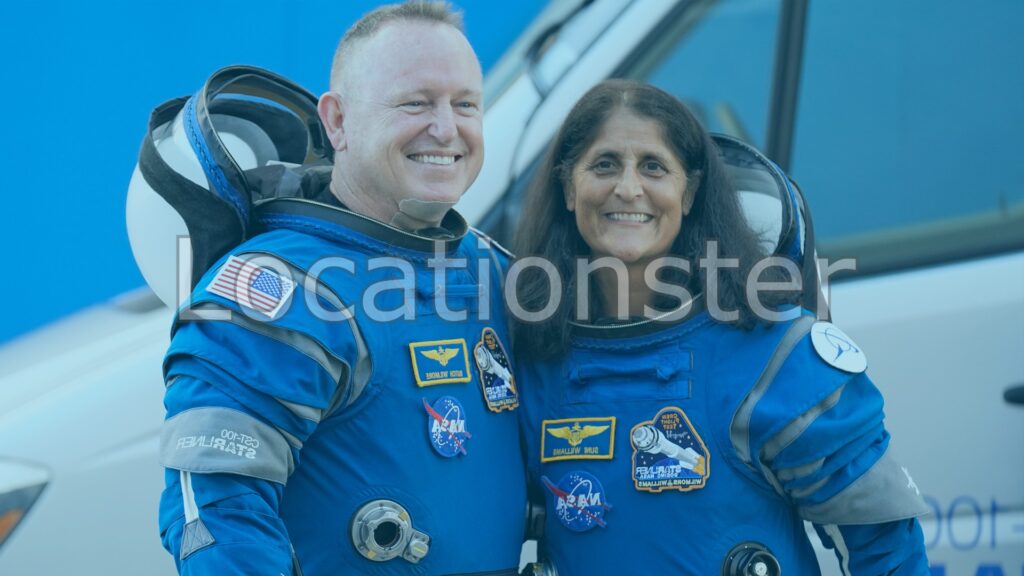In a historic moment that marks a significant milestone for both NASA and SpaceX, astronauts returned safely to Earth aboard the SpaceX Dragon spacecraft, concluding a groundbreaking mission that underscores the future of human spaceflight. This event not only represents the successful collaboration between NASA and private industry but also heralds a new era of space exploration, where commercial spaceflight plays a pivotal role in advancing humanity’s reach into the cosmos.

The Mission: Crew Dragon’s Journey to the ISS
The mission, part of NASA’s Commercial Crew Program, began with the launch of the SpaceX Crew Dragon spacecraft atop a Falcon 9 rocket from Kennedy Space Center’s Launch Complex 39A in Florida. The spacecraft carried four astronauts: two NASA astronauts, one from the Japan Aerospace Exploration Agency (JAXA), and one from the European Space Agency (ESA). Their destination was the International Space Station (ISS), where they spent several months conducting scientific experiments, maintaining the station, and contributing to ongoing research in microgravity.
The Crew Dragon, named Resilience for this mission, is a fully autonomous spacecraft designed and built by SpaceX. It represents a significant leap forward in space technology, featuring advanced systems for navigation, life support, and reusability. The spacecraft’s ability to dock autonomously with the ISS and its sleek, modern design have set a new standard for crewed spaceflight.
A Safe Return: Splashdown in the Gulf of Mexico
After completing their mission on the ISS, the astronauts boarded the Crew Dragon for their return journey to Earth. The spacecraft undocked from the ISS and began its descent, carefully navigating through the Earth’s atmosphere. The reentry process is one of the most critical phases of any space mission, as the spacecraft must withstand extreme temperatures and forces while maintaining a precise trajectory to ensure a safe landing.
The Crew Dragon performed flawlessly, with its heat shield protecting the capsule and its occupants from temperatures reaching up to 3,500 degrees Fahrenheit (1,927 degrees Celsius). As the spacecraft descended, it deployed its parachutes to slow its speed, culminating in a gentle splashdown in the Gulf of Mexico off the coast of Florida. Recovery teams, including SpaceX and NASA personnel, were on hand to retrieve the capsule and its crew, ensuring their safe return to solid ground.
The Significance of the Mission
This mission represents a turning point in space exploration for several reasons:
- Public-Private Partnership: The successful return of the astronauts aboard the Crew Dragon highlights the effectiveness of NASA’s Commercial Crew Program, which partners with private companies like SpaceX to develop cost-effective and innovative solutions for space travel. This collaboration allows NASA to focus on deep-space exploration while leveraging the expertise and efficiency of the private sector.
- Reusability and Sustainability: SpaceX’s emphasis on reusability—evidenced by the Falcon 9 rocket’s first stage landing back on Earth for future use—marks a shift toward more sustainable spaceflight. This approach reduces costs and opens the door for more frequent missions, making space exploration more accessible.
- Global Collaboration: The inclusion of astronauts from JAXA and ESA underscores the international nature of space exploration. The ISS remains a symbol of global cooperation, and missions like this one demonstrate how nations can work together to achieve common goals in science and exploration.
- Inspiration for Future Generations: The success of this mission inspires a new generation of scientists, engineers, and explorers. It shows that spaceflight is not just the domain of governments but also of private companies and individuals, paving the way for a future where space travel becomes more commonplace.
What’s Next for NASA and SpaceX?
With the successful return of the Crew Dragon, NASA and SpaceX are poised to continue their collaboration on future missions. Plans are already underway for additional crewed flights to the ISS, as well as ambitious projects like the Artemis program, which aims to return humans to the Moon by the mid-2020s and eventually send astronauts to Mars.
SpaceX, meanwhile, continues to innovate with its Starship program, a fully reusable spacecraft designed for long-duration missions to the Moon, Mars, and beyond. The success of the Crew Dragon mission provides valuable data and experience that will inform the development of these next-generation vehicles.
Conclusion
The safe return of NASA astronauts aboard the SpaceX Crew Dragon is more than just a successful mission—it is a testament to human ingenuity, collaboration, and the relentless pursuit of exploration. As we look to the future, this achievement serves as a reminder that the boundaries of what is possible are constantly expanding. With NASA and SpaceX leading the way, the dream of exploring the stars is closer than ever to becoming a reality.